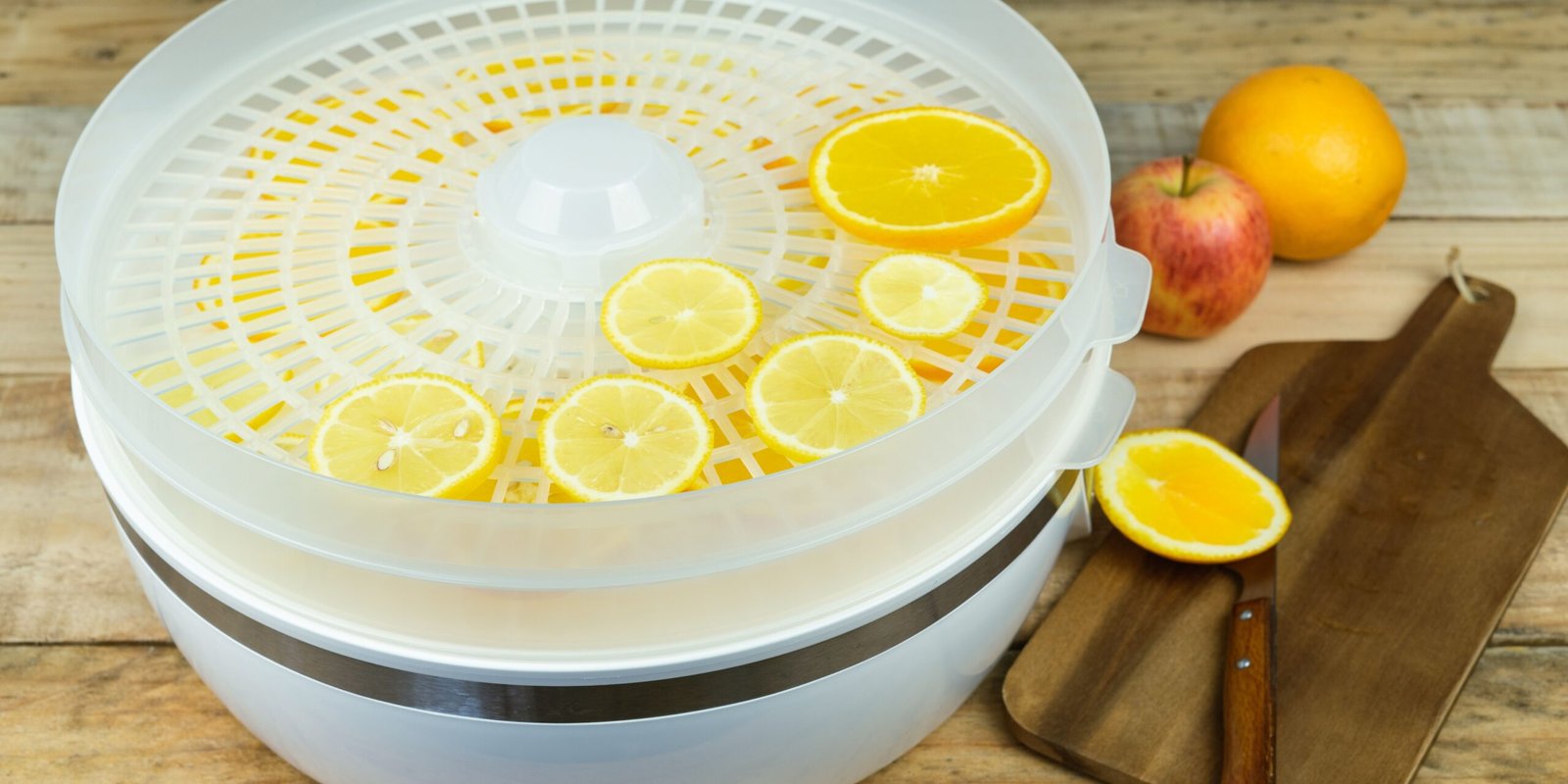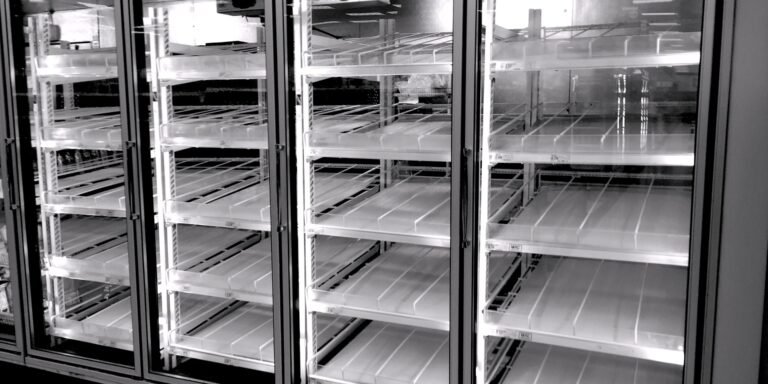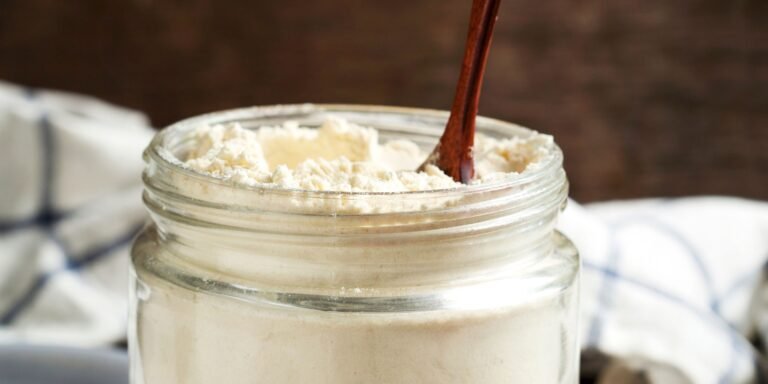5 Tips For Storing Dehydrated Foods Long Term
This post may contain affiliate links, full disclosure here.
If you’re looking into storing your dehydrated food long-term, here are 5 things you should keep in mind to keep your food fresh for as long as possible.
You don’t have to be a doomsday prepper to start dehydrating and utilizing long term storage. Having food security for your family is a natural thing and it does not make you a hoarder.
But getting started with dehydrating and storing food can be intimidating because it seems like there is a lot to it. While there are a lot of rules that can help you store your food longer, they are fairly standard and easy to remember.
Dehydrated Food Solutions

| A Dehydrator Machine (do it yourself method) | Pre-Packaged Dehydrated Foods (This is the best hack) | Meals Ready to Eat (MREs) (military grade full meals) |
| Using this method, you can prepare your fresh food into an endless supply of dehydrated food stuffs. Just make sure you have access to a source of electricity. | Prepackaged foods that are dehydrated can be found in almost any market. You can also shop on Amazon for Dehydrated foods and snacks (most have long shelf life) | Lastly, you could keep your dehydrated food supply as an emergency meal ready to eat kit, like this one – which includes lunches and dinners. |
So let’s get into these 5 tips for longer food storage of your dehydrated items.

What Is Dehydrated Food?
For millennia, people have used drying as a means of food preservation. The term “drying” or “dehydrating” refers to the process of removing moisture from food in order to store it for longer periods of time.
They didn’t have fancy dehydrators like we do, but they used the natural sunlight to do their drying once upon a time. Sunlight is still a great option for herbs and flowers if you wanted to dehydrate some for long-term storage.
The process is simple – take out all the moisture from your food and store in a container that has an airtight seal.
If you ever come across a killer sale at the grocery store, it’s a good idea to buy a lot of it and then dehydrate and put it into your long-term food storage.
How long dehydrated food lasts is determined by a number of elements that have improved over time for both ancient and modern mankind.
Dry food is produced using a different approach in modern manufacturing. Manufacturers now use hot air to impart heat to the food. The hot air effectively eliminates the majority of the moisture, extending the shelf life of the product.
Whatever technology manufacturers utilize in this process, modern food drying methods transport heat and mass concurrently within the product.
Other approaches involve manipulating food moisture content with a specific gas by manipulating heat and mass within the medium of transfer and the food. To put it another way, a medium dehydrates food by injecting energy into it.

Food is dried in a variety of ways by manufacturers and survivalists, including:
- Dehydrators powered by electricity
- Dehydrofreezing
- drying in the sun (not suitable for humid climates)
- Microwaving
- Using the air to dry
- Drying in the oven
- The drying of the room
Other consequences of dehydration from meals include:
- Food volume and weight decrease.
- Packaging and storing food becomes less difficult.
- Simple to transport
- It’s easier to use because you only need to add water or milk to rehydrate dry items (eggs, fruit, vegetable juice, milk, coffee extract). Adding water to powdered eggs or milk, for example.
- Enhances or enhances a variety of attributes such as flavour, texture, or sharpness). Raisons, for example, go through a transition process from grapes.
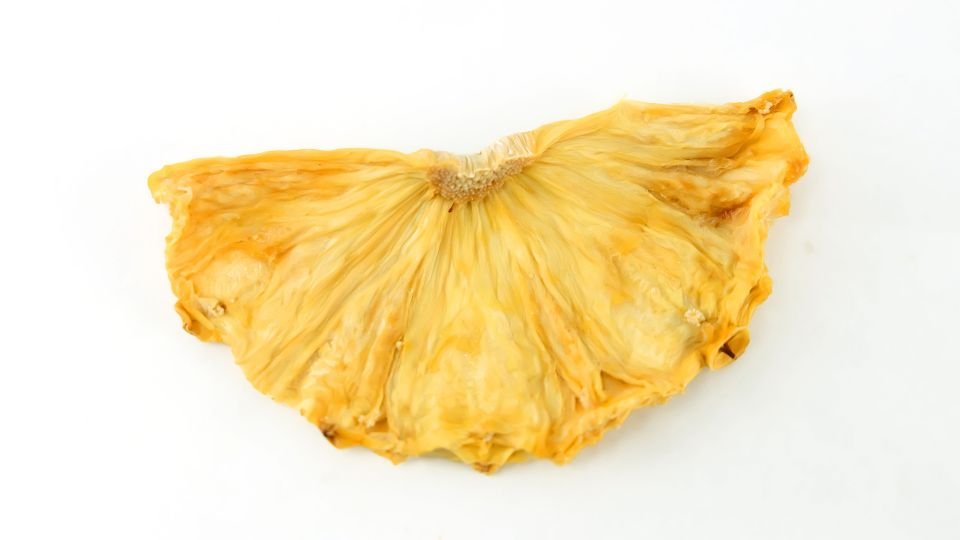
Why does dehydrated food last longer?
How long does dehydrated food last? Dehydration refers to the process of eliminating excess moisture from food. Because organisms require moist environments to grow, the shelf life of food can be extended if moisture is removed.
Moisture is required for the growth of many bacterial species. In wet settings, organisms such as yeasts, molds, and bacteria thrive. Dehydrating food has a neglegible impact on these organisms’ ability to flourish.
As a result, the lack of most of the moisture in the food extends the foods shelf life because dry food is less likely to attract and harbor bacteria.
Food dehydration has the drawback of causing nutrient loss. Despite the fact that most dehydration procedures leave the food with 20% moisture content, vitamins such as A and C are lost.
The loss of these vitamins occurs when the food is dehydrated with heat or air. The product’s shelf life, on the other hand, extends, allowing individuals to take advantage of the remaining nourishment.
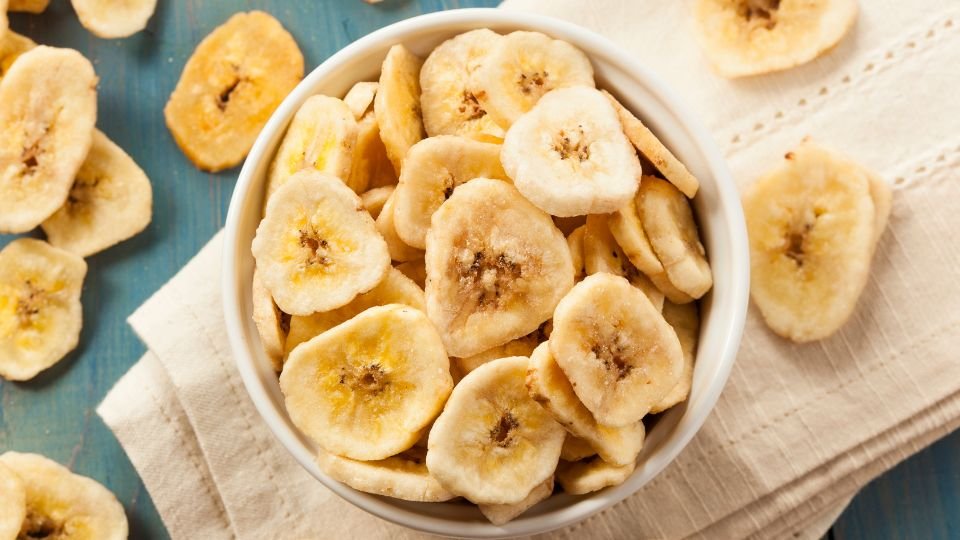
Sulfite is commonly used by food manufacturers to prevent vitamin degradation, however, it also kills thiamin.
Even if you blanch veggies for preservation before drying them, the C and B-complex vitamins will be lost. Because minerals are water-soluble, you might expect important minerals to be inadequate in vegetables, fruits, and other foods.
When drying and storing these commodities, however, blanching prevents thiamin degradation and the loss of vitamins A and C. Another thing to consider is that because the nutrients are now concentrated, dried foods have higher calories per weight.
For example, if you dry 200 grammes of 102-calorie fresh apricots, you’ll get 520 calories in the same amount of dried apricots. Drying your foods at low temperatures and storing them at low humidity levels will help them last longer.
You can simply rehydrate dehydrated foods with water to make a meal out of powdered eggs or eat dried meats like beef jerky.
Dehydrating foods is a great way to preserve other goods like fruits, which can help people get through disasters like hurricanes.
Dried foods are also ideal for carrying on outdoor adventures because they are light and take up little room.
When you don’t have access to modern cooking equipment, these foods are also quick and easy to make, making them excellent for surviving famines, droughts, and other natural calamities.

Tips for storing dehydrated food
It all relies on how thoroughly you dry it out and store these meals.
Once the food is dry, you should think about the best ways to store it so that it can last for months or even years.
When preserving food, there are various factors to consider.
Temperature – Keep a thermometer handy
If you keep dry goods at 60°F, they will last twice as long as if you store them at 80°F.
Humidity
Keep the food away from wet conditions, since this will negate all of your dehydration efforts and cause it to spoil.
Oxygen
Food that has been dehydrated should be stored away from air to prevent spoilage and flavour loss. Foods that have been dehydrated and come into touch with oxygen will have a lower shelf life.
Brightness
Dehydrated foods, like oxygen, are degraded by light, so keep them in a dark place.
Wash your hands with soap and water
When storing dehydrated food, keep your hands clean. When dehydrating items and storing them, make sure your hands are clean. Germs can quickly spread from unclean hands to dried foods, contaminating them.
Storage options
Dried foods can be stored in a variety of ways. Regardless of which approach you to pick, keep your dried foods in a dark, cold room with plenty of ventilation. Allow time for meals to cool completely before storing them. Once the food has cooled completely, you can move it to a variety of containers, such as:
- Containers that are airtight
- Refrigeration containers that can be resealed
- Bags that are vacuum sealed with a vacuum sealer
- Use Ziploc or ReZip bags.
- For bags, use vacuum sealing equipment.
- Jars that have been vacuum-sealed
- Bags made of mylar with oxygen absorbers
- Packets of desiccant to put in airtight jars or vacuum seal jars
Desiccant packets or oxygen absorbers add to the safe preservation of dry foods by absorbing any remaining moisture in the container.
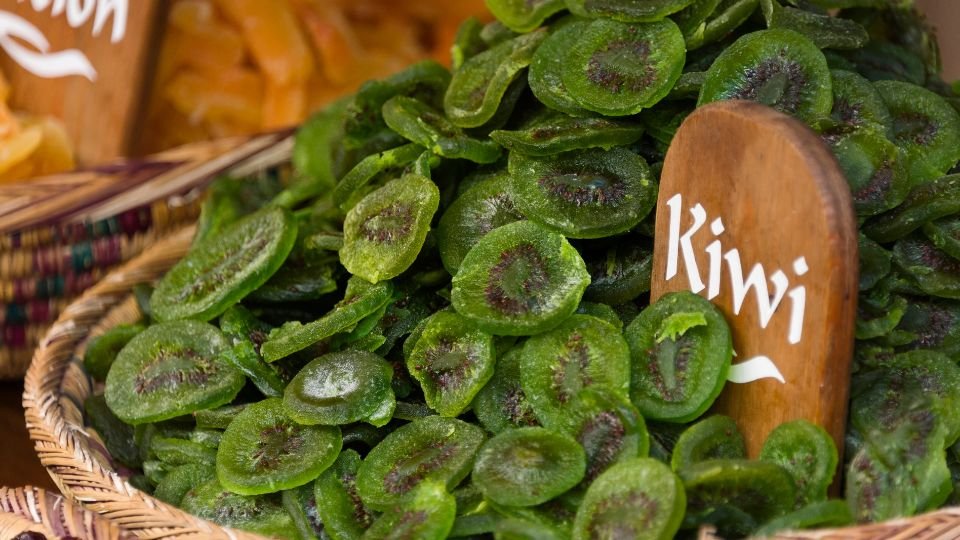
These procedures ensure that extra moisture does not come into contact with the dried food, extending its shelf life.
What is the shelf life of dehydrated food? The answer to this issue depends on how you dehydrate the food, how you clean it, and how you store it after it’s dried.
You can learn how to dry certain foods including meats, fish, poultry, vegetables, fruits, cereals, and dairy goods by conducting research.
Survivalists will need to do more research to figure out the optimal drying procedures for each sort of food they want to save. Certain storage methods are better for some dried foods than others after this process.
However, there are some things you should avoid doing while drying and storing food to ensure it lasts as long as possible.
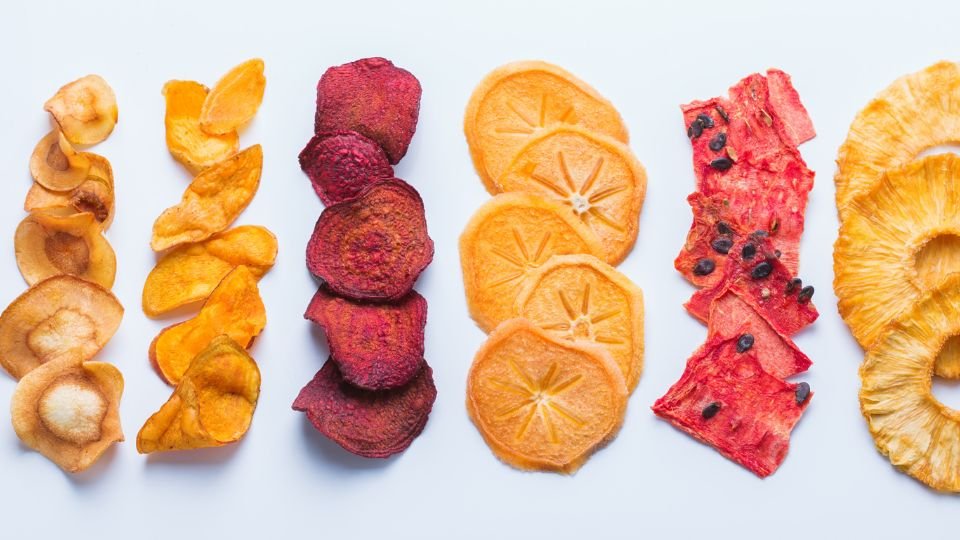
Things to avoid when storing dehydrated food
It takes time to dehydrate items. When you perform a terrific job, the outcomes are fantastic.
When you try to speed up the drying process, you reduce the shelf life of the food, which helps to answer the question of how long does dehydrated food last. Furthermore, if you concentrate on executing the work correctly, the shelf life of your dried foods will be extended, which is great for the survivalist.
When it comes to drying foods, there are a few things you should avoid:
- Avoid touching meals with soiled hands or on soiled surfaces, as germs can quickly spread between them. When doing this type of labour, always fully sanitise surfaces, hands, drying equipment, and storage goods.
- Don’t forget to do your homework on the proper preparation and drying timeframes for the food you’re working with. Playing a hit-or-miss game is a major blunder that can easily undo your efforts. It will not be pleasant to devote time and effort to a task only to discover that you have completed only half of it.
- Make sure you’re drying foods at the right temperature for them. Drying timeframes will vary based on the methods you choose, the climate, and the environment, so always read more before starting a food dehydration process to find out what works best. Obviously, having an electric drying machine removes a lot of the uncertainty from the procedure because these machines typically come with detailed instructions.
- Avoid attempting to speed up the drying process by starting with one temperature and gradually increasing it to accelerate dehydration. The food will produce an exterior seal to lock in the interior moisture if the temperature in the drying apparatus is constantly changing. This result is the polar opposite of what you want.
- Drying times should not be sped up because the end moisture level of food should be about 20%. For the best results, most home food drying equipment recommends that moisture levels be reduced to 5%. Check to see if the meal is still sticky or spongy, as this indicates that the water content is still too high.
- After you’ve finished drying your products, resist the need to store them right away. Before packaging, let the products dry naturally in a cool, well-ventilated environment.
- If you open a container containing dried goods, be aware that they will be exposed to moisture-rich air and oxygen right away. The leftover dry food will be spoiled by both moisture and oxygen. Jars should not be left open for longer than required. Remove the desired amount of food and replace it with desiccant packets or oxygen absorbers before resealing the jar.
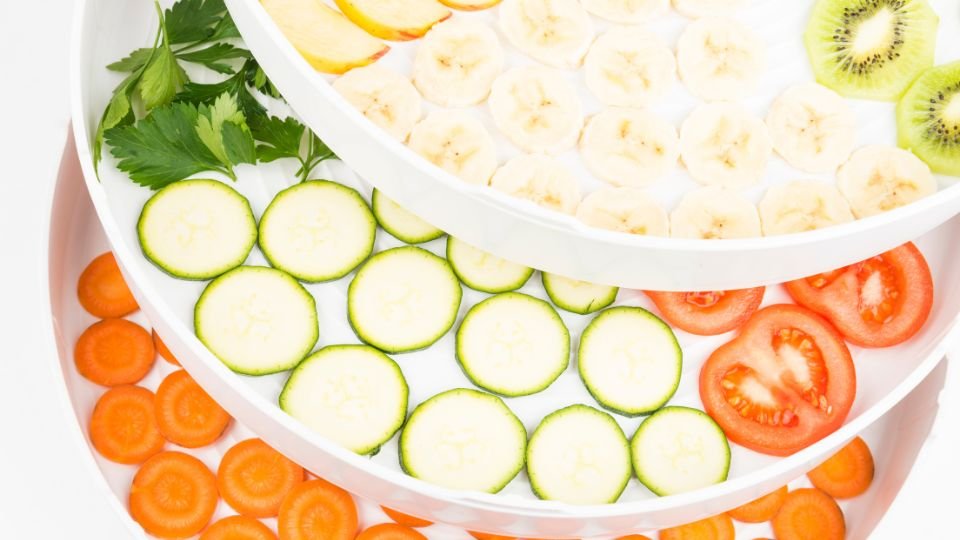
Dehydrated Food Shelf Life
Potato – 20 Years
We recommend putting potatoes on the top counter of your survivalist pantry to extend their shelf life.
The positioning will keep them dry, and the continual fluctuation in temperature as you replenish and reload will not harm or spoil them.
Dehydrate them as much as possible; even a small amount of water in them might produce mold, defeating the point of keeping them.
Blanch them first before dehydrating; if you ignore this step, they will turn brown/black even after dehydrating. They don’t appear to be at all appetizing.
A robust potato side dish is a must-have for any meal. Fortunately, dehydrating them isn’t as difficult as digesting the potatoes’ carbohydrates!
These potatoes have a 20-year shelf life, making them ideal for long-term preservation. These potatoes can be dehydrated as a powder, chips, or grated Julian. With a little water and butter, the potato powder would immediately rehydrate.
Even if you’re surviving, you can make mashed potatoes with these three components; you can keep your breakfast hashbrowns ritual going by simply soaking them in water and frying them as usual.
Don’t worry; your everyday au gratin or scalloped potato casseroles will taste exactly the same.
Apples – 20 Years
You should keep the moisture content around 20% to extend the shelf life. There’s a good likelihood that moisture will pool in one area of the apple slice; this can be avoided by treating the fruit.
Once the fruit has cooled, place the slices in a Ziploc bag, making sure not to overcrowd them; if you have a huge lot to deal with, use several bags. Allow a week for this Ziploc bag to sit on your counter.
The driest piece would benefit from this approach because it would soak up the excess moisture and equalize the water ratio. If there is still a lot of dampness after a week, put them in the dehydrator again and let them crisp. This method will unquestionably extend the shelf life of your apples.
To conserve the colour of apple slices, spritz with a little lemon juice; if you want to make a powder, keep the pieces as thin as possible.
Thin slices can speed up the dehydration process; you can then ground the powder and use it to flavour ice cream or yoghurt as a quick snack.
If you want to save these potatoes for a delicious cobbler pie, chop them slightly thicker than you normally would.
Jerky Meats – 1 Year
If you keep beef jerky in a Ziploc bag, it will stay edible and good for 10-12 days.
If you wish to keep it for another 5-6 months, invest in vacuum-sealed bags to extend the shelf life.
Making homemade jerky is far easier and less expensive than buying a pack of store-bought jerky. Your jerky will be incredibly nutritious and free of preservatives after dehydrating it.
The perfect beef jerky should bend slightly before breaking into pieces; if it just breaks into chips, the jerky has been over-dehydrated. Always select a lean cut of meat; the less fat in your jerky, the better it will dehydrate and keep for a long time.
Top and bottom round roasts, flank steak, sirloin tip, and eye of round roast are some of the best meats to dehydrate.
Milk – 15-20 Years
If you want to store your milk powder for longer than ten years, avoid using ordinary milk and instead use skimmed milk. Because of its lower fat content, skimmed milk has a longer shelf life.
To ensure that your milk powder stays fresh for as long as possible, store it in an airtight container. When utilising the powder, avoid using a wet scoop or spoon. The wet spoon can quickly saturate the milk, causing mould to form within days.
We apologise in advance for the difficulty of dehydrating milk; nonetheless, the end product is well worth the effort.
Milk is the easiest and most straightforward dehydrated meal to rehydrate. To turn the mixture into milk, you add water and whisk it.
Strawberries – 10-15 Years
After your initial dehydration cycle, condition your strawberries as soon as possible.
Conditioning will remove any moisture, allowing them to last for years. To begin and aid the conditioning process, keep shaking the Ziploc bag.
The strawberries should be chopped and sliced to the same thickness, or they will not dry uniformly. 18 to 14 inch pieces would be perfect since they would dehydrate uniformly.
Because drying strawberries is rather simple, you can try dehydrating them in the microwave or oven as well. If you’re on the fence about buying a dehydrator, start with microwaving.
These strawberries would be quite sweet, and you could skip dessert altogether for a healthier option.
Eggs – 5-10 Years
Many people dehydrate their eggs at 140° F, however this temperature does not destroy salmonella, and the repercussions of the temperature must be considered.
Because of the microorganisms, dehydrating your eggs at a lower temperature will cause them to spoil much faster. According to USDA research, they must be kept at a temperature of at least 160° F to be safe. To be extra safe, we recommend going to 165° F for 10 hours.
Although dried eggs may not seem delicious, extreme survivors and preppers keep them in their larder for their nutritional value.
You can use it to make a steaming bowl of scrambled eggs or a French omelette, or you can bake or cook with it. The eggs should look like thin crunchy crackles after combining and dehydrating them; combine and store the powder in sealed containers.
Brown Sugar – Forever
If you don’t store your dried sugar properly, it will go bad quickly. Keep the brown sugar in a sealed five-gallon bucket deep where there is no light for it to remain eternally or for a few years.
You can separate smaller quantities and store them in sealed containers for immediate use.
Brown sugar can be used in practically any dessert. It’s healthier than conventional white cane sugar and gives your foods a rich flavour.
Brown sugar gels well with desserts, so you can use it to make bread, croissants, and a variety of desserts. Just test it first and break out any clumps before using it.
Banana – 20 Years
To keep the colour and composition of your banana slices while they dehydrate, soak them in ascorbic acid.
To extend the shelf life of these chips, store them carefully in an airtight container with oxygen absorbers.
To get the most shelf life out of your chips, make sure they’re completely dry. Some consumers prefer chewy chips, therefore the final shelf life would be reduced to 5 years.
These chips are high in nutrients and go great with a bowl of cereal or simply as a snack. The final chip will be sweeter to taste if you use fully ripe bananas.
Pinto Beans – 25 Years
One of the best things about pinto beans is how well they keep their freshness without requiring any work. They can be stored in Mylar bags and are good for more than a quarter-century of use.
If you want to use these beans as a taco topper, give them some time to rehydrate. If you’re making chilli, you can put them in a pot with some water and spices and cook them alongside the rest of the ingredients.
Beans will undoubtedly provide you with a hassle-free option while also ensuring that your dinner is healthful.
Carrots – 20 Years
To remove bacteria and clean your carrots, we recommend using the Fit Organic Produce Wash or a 50/50 mixture of clean and vinegar.
Ziplock bags are an excellent way to keep carrots. You may fill a five-gallon sealable tub with numerous Ziploc bags of different vegetables. Your dehydrated carrots will last more than 20 years if you use this approach.
Before dehydrating the carrots, blanch or steam them. Blanching is a method of cooking vegetables that are not eaten raw. This technique also makes it simpler to rehydrate after being dehydrated.
Cut tiny dices and soak them in boiling water for 5-6 minutes to rehydrate. These carrots can be used in soups, salads, or as a quick healthy snack.
Salsa – 1 Year
Because plastic containers absorb the flavour and aromas over time, you should store this tomato salsa leather in a glass jar. Putting these pieces in a well-sealed glass jar would extend the shelf life significantly.
When you’re trekking or heading outside, you can put these in easy-to-carry plastic bags.
To enhance the flavour of this sauce, a splash of olive oil can be added. You can’t dehydrate all kinds of sauces, such as three-cheese or vodka sauces, because they include a lot of lipids that won’t dehydrate correctly and can only be used for a short time.
Your dry paste should resemble leather, and you should be able to prepare tomato sauce for your spaghetti and pasta by adding water to it.
Yogurt – 2 Years
By storing the powder in a sealed glass container with no light and oxygen, you can extend the shelf life of your yogurt. We don’t recommend frequently opening the yogurt powder container because the moisture in the air can quickly absorb into the powder.
If you want to make no-cook breakfasts, this yogurt is a great starting point. To make a healthy supper, combine this with freeze-dried fruits and cereals.
This yogurt powder will have a sour taste and a little gritty consistency, but this will only be noticeable when eating the yogurt alone. When combined with granola and fruits, its flaws are almost unnoticeable.
Bottom Line How Long Does Dehydrated Food Last
The adventure of survivalism is both exhilarating and fulfilling. How long dried food lasts is determined by how much time and work you’re willing to put into building your emergency food supply.
Before starting this project, learn as much as you can about dehydrating specific food kinds, as you don’t want to waste significant amounts of food. You’ll also want to invest in a dehydrator as well as a vacuum sealer for your new and exciting hobby.
You’ll also want to make sure you have different foods to seal up in your food storage containers and keep everything stored in a dry location for your long term food storage.
If you’re overwhelmed by the process of dehydrating your fresh food, you can always start with pre-made food packages like this which have the longest shelf life if stored properly in a dry storage area. They also have different types of foods and full meals and are great if you don’t have much space for storing larger cans. For maximum shelf life, it’s so important that your storage space doesn’t have excessive heat or direct sunlight exposure.
You can boost your chances of success in preparing for the worst survivalist scenarios by learning about additives like sulfite and ascorbic acid in food preparation.
If you want to know more about freeze drying food this is a good blog post: What You Should Know Before Purchasing A Home Freeze Dryer as well as 3 Tips To Store Freeze Dried Food So It Lasts Long Term.

